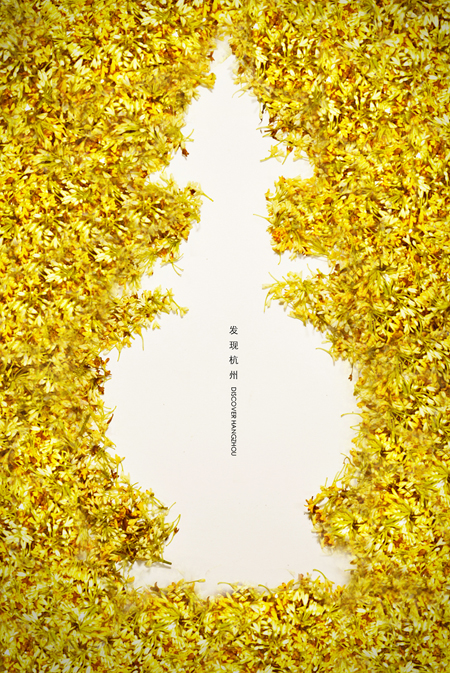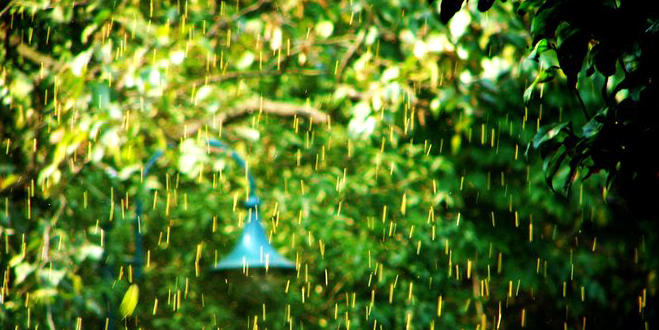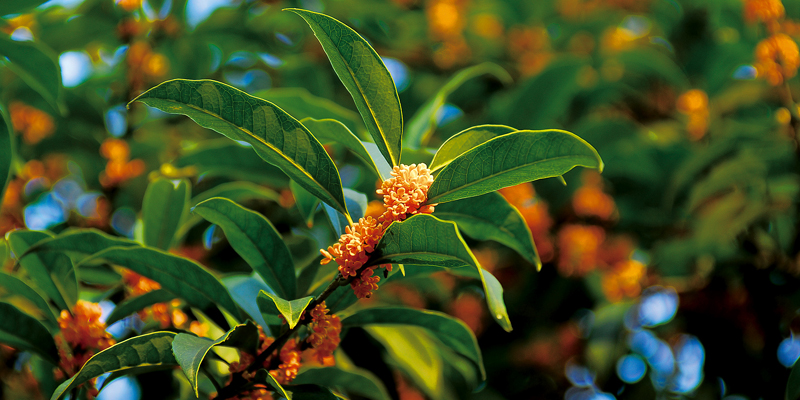Sweet Osmanthus – A Seasonal Hit
 |
During Hangzhou’s autumnal months one can literally see, breathe and smell the sweet osmanthus blooming in almost every corner of the city. With an air heavily filled with a sweeter than sweet scent, witnessing tiny yellow flowers create a warm, golden hue across the city is an experience that seasonally hits a number of senses.
Where to go:
Sweet Osmanthus Rain at Manjuelong Village (满陇桂雨公园)
There is no better place in which to view sweet osmanthus than at 'Sweet Osmanthus Rain at Manjuelong Village'. Since the Ming Dynasty (1368–1644), the park has been known for its blossoming sweet osmanthus and in 1985 it was listed as one of the 'Top Ten Views of West Lake' (西湖十景).
In addition, the location of the park is in a valley which maintains a low temperature and high humidity and therefore provides the perfect growing environment for the trees. Every year, in this park, sweet osmanthus trees are always the first to blossom as is the West Lake Osmanthus Festival (西湖桂花节) which is held annually from mid-September to late October.
Address: No.60, Hupao Road, Hangzhou (杭州市虎跑路60号)
Tel: 86-571-87981970
Lingyin Temple (灵隐寺)
It has been said that Lingyin Temple was the first place in which to grow sweet osmanthus trees and as legend has it this is how the story goes: During a mid-autumn night when the moon shined full and bright a monk called Deming (德明), from Lingyin Temple, by chance saw numerous pearl-like objects falling from the moon which were of various colors and as big as beans. Deming the monk learned that the objects in question were auspicious sweet osmanthus seeds from the moon * and later planted them on the hills around Lingyin Temple.
Since then Lingyin Temple has been surrounded by colorful sweet osmanthus and the hill next to the temple was even named 'Yuegui Hill' ('Yue' refers to the moon, and 'gui' means the sweet osmanthus). The highlight of the sweet osmanthus here is not just about the flower itself but also the mysterious features that Chinese folklore has bestowed it with.
* According to Chinese folklore, there are two people who live on the moon: the Chinese goddess of the Moon - Chang’e (嫦娥) and Wu Gang (吴刚) who was punished to cut down a self-healing Osmanthus tree.

Address: No.1, Fayun Alley, Lingyin Road, Hangzhou (杭州市灵隐路法云弄1号)
Tel: 86-571-87968665
Hangzhou Botanical Garden(杭州植物园)
Hangzhou Botanical Gardens, known widely for their various species of flora and fauna, are also a good place in which to view the sweet osmanthus. Currently there are over 30 species of osmanthus trees in the gardens and most of the trees are over 50 years old. Among them, the over-ten-meter-tall ‘the King of Orange Osmanthus’(丹桂王), whose diameter is 1.05 meters, is magnificently highlighted.

Address: No.1, Taoyuan Ridge, Hangzhou (杭州市桃源岭1号)
Tel: 86-571-87961089